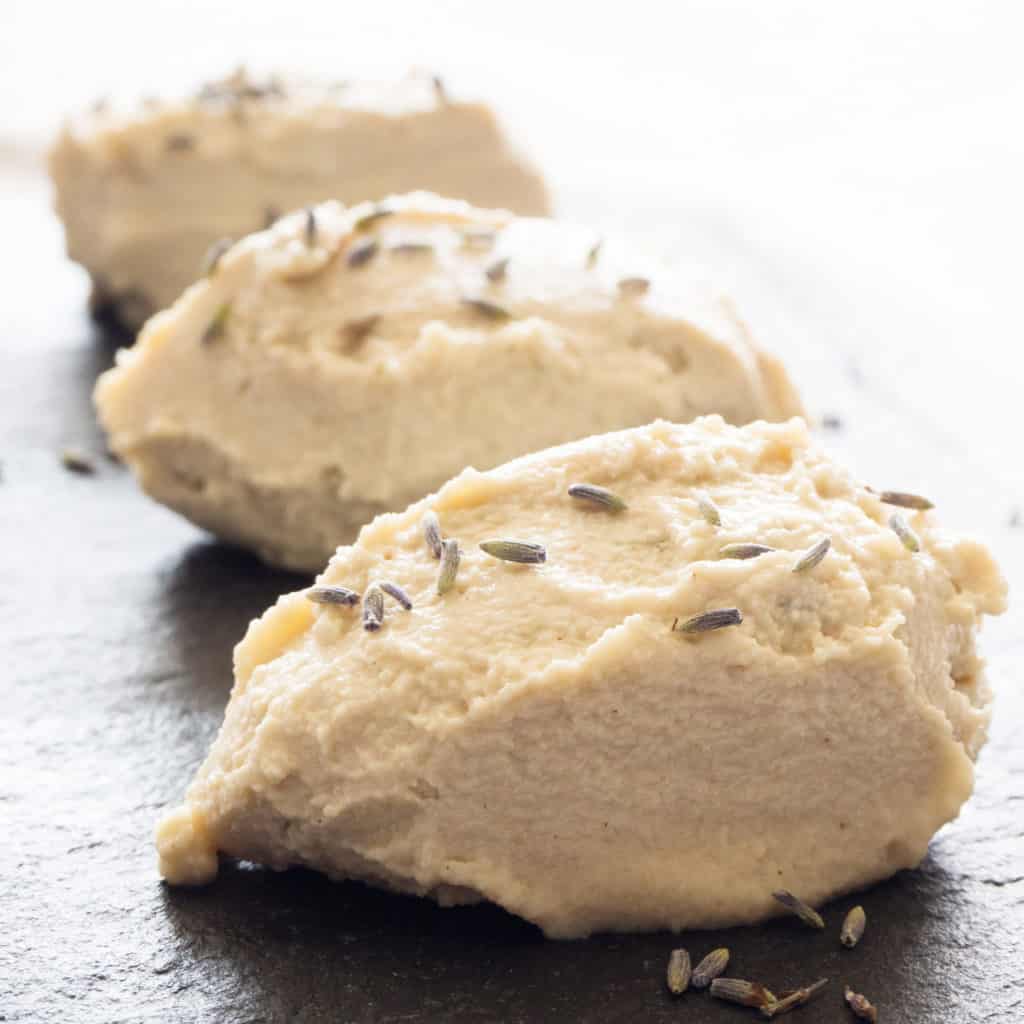
Lavender Ice Cream is so heady with the wonderful scent and flavour of lavender it is summer on a plate. Lavender is such a relaxing scent which makes this the perfect end of the day desert to relax with. I first encountered the amazing the scent and beauty of lavender flowers and hedges on a training camp when I was about 13. I had never seen or smelt such beautiful hedges that were full of fantastic flowers. I adore the scent even now and really don’t associate it with grandmothers and mothballs – as some do.
Lavender Ice Cream is easy but it takes time to make – soaking the cashews over night and freezing for four hours.
Lavender Ice Cream is perfect to end any meal and has quite a grown-up flavour, suitable for a dinner party.
If you are lucky enough to have lavender in your garden you can pick your own lavender. Otherwise you can buy food-grade lavender online.
You can substitute the almond milk for another non-dairy milk.
You can find the full Lavender Ice Cream recipe here.
If you have an ice-cream maker you can use this. The texture will be smoother with an ice-cream maker.
The best container to use to freeze is a freezer-proof container with a lid.
Preparation
Difficulty
Preparation time 30 minutes (excluding overnight soaking time)
Cooking time 4 hours
You can find the full Lavender Ice Cream recipe here.
Allergens
Lavender Ice Cream is gluten-free and vegan as well as…
Celery free
Coconut free
Garlic free
Lupin free
Mustard free
Nightshade free
Onion free
Peanut free
Sesame free
Soya free
About
There are many varieties of lavender plants that grow across different continents with over 30 different species in the genus lavandula. Lavender is an Old World genus, distributed from Macaronesia (Cape Verde, the Canary Islands and Madeira) across Africa, the Mediterranean, South-West Asia, Arabia, Western Iran and South-East India. It is thought the genus originated in Asia but is most diversified in across Europe and Africa.
The genus includes annuals, herbaceous plants, subshrubs, and small shrubs. The native range extends across the Canary Islands, North and East Africa, Southern Europe and the Mediterranean, Arabia and India. The most common form in cultivation is the common or English lavender lavandula angustifolia. Cultivated forms of lavender are planted in gardens worldwide and so are lavender can be found growing wild as garden escapees, beyond their native range. Lavender cross-pollinates easily and so there are numerous variations within the species. Lavenders flourish in dry, well-drained, sandy or gravelly soils in full sun. All types need little or no fertiliser and good air circulation.
Lavender has lots of culinary uses, it adds a floral and slightly sweet flavour to food – usually sweet dishes. Adding dried lavender flowers to sugar and storing (as with vanilla sugar) produces ‘lavender sugar’ which can be used as a baking ingredient. Lavender flavoured teas are popular where flowers are blended with black, green, or herbal tea. Lavender flavoured chocolate is also popular. Candied lavender flowers are used as decorations on cakes and pastries.
Recently lavender has become more popular as a cooking or baking ingredient in some regions. Most often the dried flowers. Only the lavender flowers contain the essential oil of lavender, from which the characteristic scent and flavour of lavender are derived. Lavender greens have a more subtle flavour that is compared to rosemary. The greens can be used in place of rosemary or combined with rosemary to flavour savoury dishes. They can also be used to make a tea that is milder than teas made with the flowers.